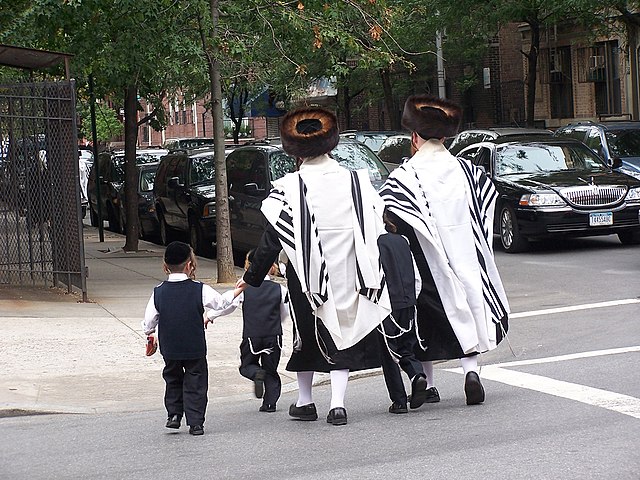Demographics of New York City
New York City is a large and ethnically diverse metropolis. It is the largest city in the United States with a long history of international immigration. The New York region continues to be by far the leading metropolitan gateway for legal immigrants admitted into the United States. The city is the geographical and demographic center of both the Northeast megalopolis and the New York metropolitan area, the largest metropolitan area in the U.S. by both population and urban area. With over 20.1 million people in its metropolitan statistical area and 23.5 million in its combined statistical area as of 2020, New York City is one of the world's most populous megacities.
Chinatown, Manhattan, is the highest concentration of Chinese people in the Western Hemisphere.
Brooklyn's Jewish community is the largest in the United States, with approximately 600,000 individuals.
The landmark Neo-Gothic Roman Catholic St. Patrick's Cathedral, Midtown Manhattan
Central Synagogue, a notable Reform synagogue located at 652 Lexington Avenue
African Americans in New York City
African Americans constitute one of the longer-running ethnic presences in New York City, home to the largest urban African American population, and the world's largest Black population of any city outside Africa, by a significant margin. As of the 2010 census, the number of African Americans residing in New York City was over 2 million. The highest concentration of African Americans are in Brooklyn, Harlem, Queens, and The Bronx. New York City is also home to the highest number of immigrants from the Caribbean.
Band rehearsal on 125th Street in Harlem, the historical epicenter of African American culture. New York City is home by a significant margin to the world's largest Black population of any city outside Africa, at over 2.2 million. African immigration is now driving the growth of the Black population in New York City.
African American Day Parade in Harlem in 2022
The Apollo Theater on 125th Street in Harlem is the historic nexus of African American culture.
Philip A. Payton, Jr.








